Computer often freezes: Causes and solutions
Software problems cause the computer to freeze
1. The computer is infected with a virus
This is considered the most common reason. There are many types of viruses that cause operating system errors and computer crashes. You can fix it by using a reliable antivirus program to scan the entire system.
You can refer to the list of the best anti-virus software at: 9 most effective anti-virus software for Windows today
2. Software error problem
Unfortunately, poorly written software is beyond your control. Whether it's an old app that hasn't seen updates in years or a lousy Chrome extension, you may have noticed that the unresponsiveness issue only occurs when using a certain program. .
If you can determine which app is causing the problem, make sure you have installed the latest updates for it. Sometimes new versions can solve many types of problems. If that's not an option, check out AlternativeTo.net instead.
If the problem occurs in your browser, try disabling each extension to see if that resolves the problem.
3. Insufficient resources
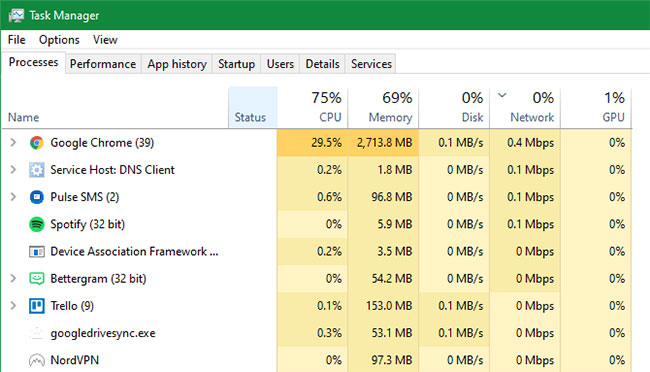
One of the most common reasons Windows becomes unresponsive is because it doesn't have enough resources to run smoothly. Two components that often have performance problems are RAM (memory) and CPU.
The computer stores all running programs in RAM. If those processes take up all of the physical memory, the computer must use the page file, a part of the storage drive that essentially acts as backup RAM. See How to manage computer virtual memory for more information about this.
Even if you have an SSD, using a page file is much slower than actual RAM for this purpose. As a result, you will experience slowdowns when your computer relies on page files.
Open Task Manager with Ctrl+ Shift+ Esc, switch to the Processes tab and sort by the Memory heading to see which processes are using the most memory. Close programs if you don't need them anymore and your system will recover.
The same goes for high CPU usage. Operations, such as encoding HD video, consume a lot of power from the CPU. Therefore, the system may become unresponsive while the CPU is operating at high intensity. Learn how to fix high CPU usage in Windows if this is something you experience often.
4. Driver problem
Even if a particular piece of hardware doesn't cause the computer to become unresponsive, its drivers still might.
For basic devices like a mouse or keyboard, Microsoft drivers will work fine. However, using all the features of a device requires separate drivers. Problems can arise if your installed driver is out of date, incompatible with your version of Windows, or for the incorrect device.
The general rule with drivers is that you should not touch them if everything is working properly. Third-party driver update utilities are often 'shady' and can break things more than they can fix. If you suspect a driver problem, TipsMake has covered how to safely replace outdated drivers.
5. Windows Registry problem
Registry is a database in which Windows stores all kinds of detailed information about the system and its configuration.
In most cases, the Registry will function fine without your intervention. The article strongly recommends that you avoid using Registry cleaning software, because they are quite useless and can be dangerous. Even if there are old entries in the Registry, cleaning up thousands of errors will not provide any performance benefit.
If your Registry is so messed up that it's making the system unresponsive, you'll probably need to reinstall Windows. This should not be done unless you made a mistake while editing, used a Registry cleaner, or are infected with malware.
6. Run multiple anti-virus tools
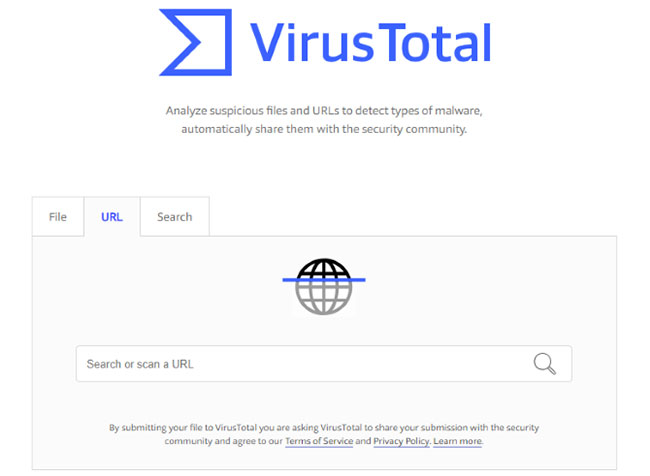
Thankfully, Windows 10 comes with Windows Defender, which is a good enough antivirus solution for most people. However, if you choose to use something else, you should be sure that it does not cause performance problems.
Running multiple anti-virus programs will often cause them to conflict with each other and slow down the system. If you want to use a second antivirus, use an option like Malwarebytes, for example.
Also, try using a free online virus scanner like VirusTotal. These allow you to scan a file with dozens of different antivirus applications at once, ensuring that your file doesn't miss anything.
Besides that, make sure you use one of the best Windows antivirus suites. Avoid unknown applications, as they may not be well optimized and thus cause system slowdowns.
7. User fine-tuning
When you rule out all the above scenarios, it's possible that the stability problem comes from some tweaks you've made to Windows.
Changes in the Control Panel or Settings application will not interfere with the system, but using third-party tools to customize Windows may break something unintentionally.
Think about the tools you've used to ensure privacy on Windows 10, tweaking the Taskbar or similar deep changes. Consider reversing those if you can't find any other source for the instability.
The problem is caused by hardware causing the computer to freeze
1. System memory error
Another common cause of computer crashes is RAM memory errors. You can download the Memtest86 utility to check if your RAM is damaged.
If the RAM is damaged, the best way is to replace it with new components. In case the RAM still works normally, you should clean and re-insert the RAM bar to strengthen the contact circuit area.
To clean and reinsert RAM, follow these instructions: Turn off the computer and unplug it from the power source. For desktop computers, open the case and refer to the user manual if necessary to locate and reinstall the RAM. Push out the 2 RAM lock levers on both sides and pull out the RAM bar. Then, plug the RAM back in, paying attention to the RAM slot to clearly see the fixed edge on the slot and the RAM. Place the RAM so that the slot on the RAM pin matches the RAM slot on the motherboard. Finally, close the lever.
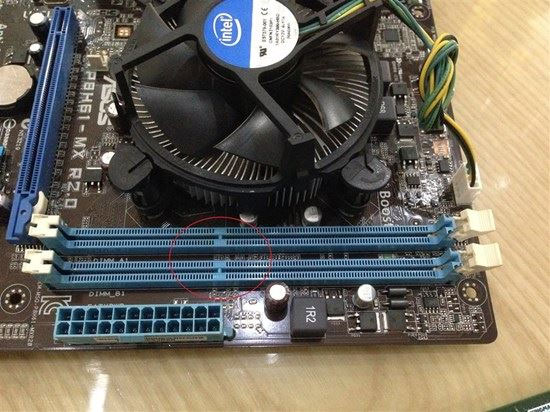
Pay attention to the fixed edge in the RAM slot to insert the RAM in the correct direction
For laptops, RAM is usually behind a labeled cover. Twist the latch to open the cover, pull and hold the RAM clamp then pull the RAM towards you at a 45 degree angle and push the RAM out of the slot. Then, insert the RAM into the slot at a 45 degree angle, rotate gently until the lever clamps the RAM tightly.
2. Microprocessor error
A damaged processor can lead to crashes. There are cases where the CPU is faulty but still works. When the system requires too much processing, the CPU cannot respond and causes the computer to hang. If the CPU is still operating normally, its cooling fan may have a problem, not cooling the CPU when it is operating.
The solution is to clean the CPU fan and replace the thermal paste.
3. Video card error
If your computer freezes when you restart the operating system, end the command line mode and start entering the graphics screen, or when the computer is processing high-resolution images or playing heavy games, it could be the cause. The cause is due to a video card error.
The solution in this case is to replace the video card ( if damaged ) or clean the video card.
Applicable to desktop computers: Unscrew the screws and push the rear latches to remove the video card on the desktop computer. Then, push the card straight into the slot to fit and screw it back.
4. Loose hardware
Loose hardware connection ports will cause the computer to operate erratically and lead to crashes. In this case, please firmly plug in all cards and ports on the desktop computer.
5. Incompatible hardware
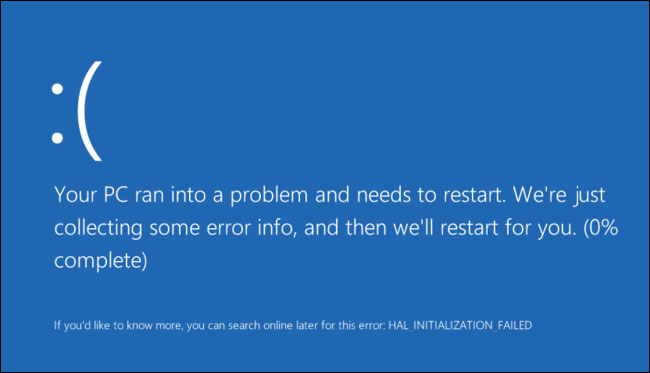
If a piece of hardware is not fully compatible with your version of Windows, it can cause stability issues. Usually, hardware problems lead to Windows crashing, because the operating system has no other options. However, these problems can also cause system freezes.
When this happens, think about whether you've recently connected some new hardware to your PC. Any printer, mouse, keyboard, USB or other peripheral can be the source of the problem. If you use an outdated piece of hardware, replace it with a modern device and see if that helps.
With the help of compatibility modes and some tweaks, you can get outdated hardware to work with newer versions of Windows. However, in many cases this is very difficult to do. Running old software on a modern PC is often easier than using ancient hardware.
Excessive temperature is also the cause of computer crashes
1. Check the temperature. If your computer supports temperature monitoring, then use the provided utilities to check the temperature. Any component with a temperature greater than 60 degrees Celsius is considered the culprit.
2. Determine if the blower is broken. If the fan does not run while the machine's temperature is too high, it needs to be replaced. If the fan on your laptop is defective, you need to take it to a repair center for replacement.
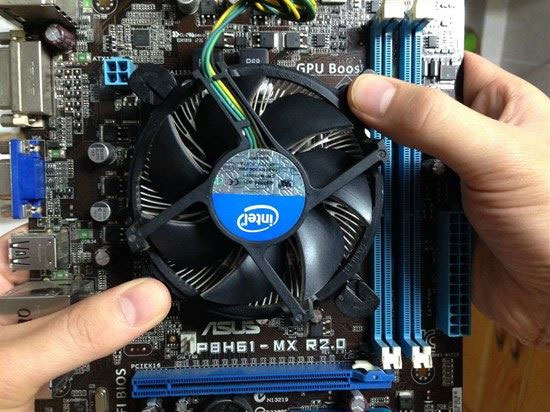
Check the computer fan
3. Add a cooling fan to the desktop. Blade width is measured in mm. Common sizes are 80, 92 and 120 mm. You need to buy a fan that fits the space in the machine.
Laptop users can purchase an additional cooling pad (usually connected via USB port).
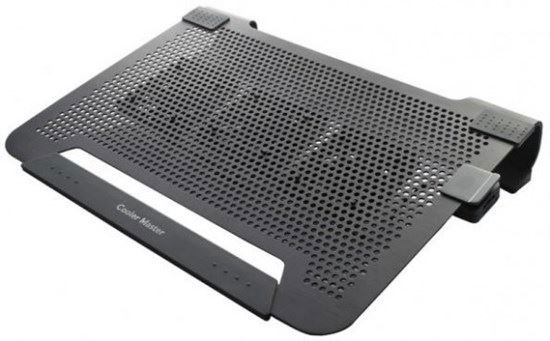
Cooling pad for laptop
4. With desktop computers, you can also add a cooling fan for the RAM in the computer.
Unstable power supply affects the computer
Flickering power supply and insufficient capacity to supply all computer components will also cause the computer to hang or stop working. To fix it, you need:
1. Always make sure your computer is plugged into a stable source.
2. Try the computer at different electrical outlets in the house.
3. Plug the computer into an uninterruptible power supply or uninterruptible power supply.
4. If it is a desktop computer: Connect the components inside the desktop computer with different power cables to avoid voltage drop problems.
You should read it
- Steps to fix Windows 10 crashes frequently
- If the computer crashes, press this key combination
- 9 steps to quickly and effectively fix frozen computers at home
- Chrome browser on Windows computer crashes, this is what you need to do
- Fix File Explorer not responding error in Windows 11/10
- Fix Excel crashes in Windows 10
- Microsoft acknowledges that the computer hangs after updating to the latest versions of Windows 10 and offering a fix
- Google Chrome crashes on Windows 10? Here's the fix!
May be interested
- iPhone screen freeze error, what should you do?
 iphone screen freezing error makes ifan feel uncomfortable and frustrated? tips boss will provide some effective solutions to help you overcome the problem.
iphone screen freezing error makes ifan feel uncomfortable and frustrated? tips boss will provide some effective solutions to help you overcome the problem. - Anti-virus strategies
 in fact there are many security solutions deployed to combat the risk of computer viruses. however, no solution is really a cure for panacea. the increased damage caused by viruses requires more effective solutions to protect computer systems, especially commercial and service computer systems.
in fact there are many security solutions deployed to combat the risk of computer viruses. however, no solution is really a cure for panacea. the increased damage caused by viruses requires more effective solutions to protect computer systems, especially commercial and service computer systems. - iPhone 14 often freezes and here's how to fix it
 iphone 14 series is a product line equipped with many of apple's most modern hardware and technology. however, many users still encounter many unexpected errors during use.
iphone 14 series is a product line equipped with many of apple's most modern hardware and technology. however, many users still encounter many unexpected errors during use. - How to fix frozen wireless mouse
 there are many reasons why a wireless mouse or usb mouse freezes or does not work, such as hardware failure or running out of battery... readers should follow the article to find out the cause as well as how to fix the mouse error. wireless freezes below.
there are many reasons why a wireless mouse or usb mouse freezes or does not work, such as hardware failure or running out of battery... readers should follow the article to find out the cause as well as how to fix the mouse error. wireless freezes below. - Computer screen ink leaks - Causes & solutions
 are you having problems with your computer screen leaking ink, purple spots, or black spots for unknown reasons? follow this article to learn the causes and simple solutions.
are you having problems with your computer screen leaking ink, purple spots, or black spots for unknown reasons? follow this article to learn the causes and simple solutions. - How to fix frozen MacBook error
 macbook has always been famous as a laptop with good performance. however, sometimes users will still encounter cases where the macbook freezes, freezes, and becomes unresponsive. in this article, tipsmake will guide you through extremely simple and easy ways to fix frozen macbook errors.
macbook has always been famous as a laptop with good performance. however, sometimes users will still encounter cases where the macbook freezes, freezes, and becomes unresponsive. in this article, tipsmake will guide you through extremely simple and easy ways to fix frozen macbook errors. - 9 Tips to fix your computer freezes and crashes 100% effectively
 instructions on how to fix a frozen and slow computer, freeze the screen quickly and effectively today. take a look right here.
instructions on how to fix a frozen and slow computer, freeze the screen quickly and effectively today. take a look right here. - 11 computer problems and workarounds
 pc world technology website lists the most common questions of people using pcs or laptops and offers solutions.
pc world technology website lists the most common questions of people using pcs or laptops and offers solutions. - Why does the TV freeze and the picture is noisy? 12 easy fixes
 tv freezes and image noise (pixelation) are generally caused by interrupted or weak tv signals. however, the specific cause may depend on the provider and type of current tv service. before calling your provider (internet company, cable or satellite tv company, etc.), let's take a look at some things you can try to get your tv picture working again.
tv freezes and image noise (pixelation) are generally caused by interrupted or weak tv signals. however, the specific cause may depend on the provider and type of current tv service. before calling your provider (internet company, cable or satellite tv company, etc.), let's take a look at some things you can try to get your tv picture working again. - How to fix computer errors or hangs, frozen
 how to fix computer errors or hangs, frozen. our computer systems are not always in a 100% stable state, they are affected by many different reasons due to many components. in order to solve the problem of computer crashes or freezes, we have to go through many general inspection steps
how to fix computer errors or hangs, frozen. our computer systems are not always in a 100% stable state, they are affected by many different reasons due to many components. in order to solve the problem of computer crashes or freezes, we have to go through many general inspection steps










 Push - Application that uses the iPhone's TrueDepth camera to count the number of push-ups
Push - Application that uses the iPhone's TrueDepth camera to count the number of push-ups 3 tips to improve privacy on Discord
3 tips to improve privacy on Discord 8 Spicetify extensions you should install for Spotify
8 Spicetify extensions you should install for Spotify 6 Android features that iPhone doesn't have
6 Android features that iPhone doesn't have Reasons why you don't really need an AI PC right now
Reasons why you don't really need an AI PC right now 7 best cloud storage services for backing up and sharing files
7 best cloud storage services for backing up and sharing files